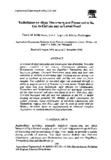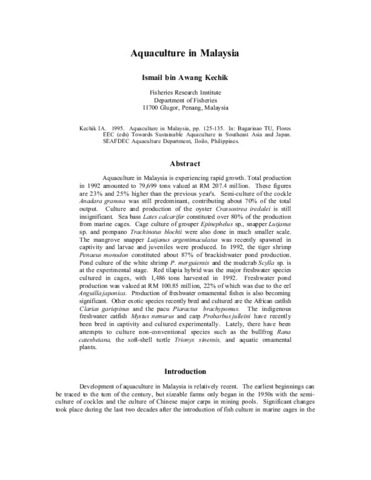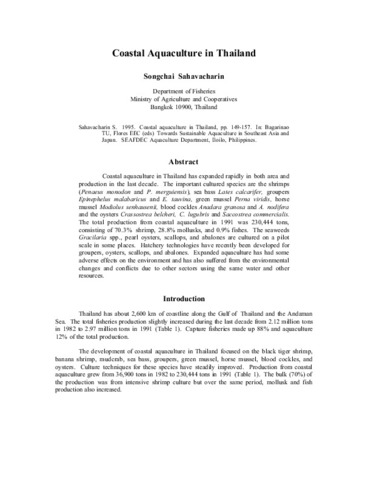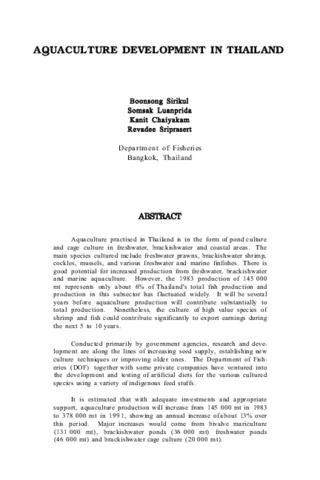Techniques on algae harvesting and preservation for use in culture and as larval food

View/Open
Date
1990Page views
413Metadata
Show full item recordCited times in Scopus
36 readers on Mendeley
Share
Abstract
A method of algae harvesting and preservation was developed. Test algal species consisted of two diatoms: Chaetoceros calcitrans and Skeletonema costatum, and two flagellates: Tetraselmis chui and Isochrysis galbana. Chemical flocculation using alum and lime were evaluated as methods of harvesting algae. Freezing and sun-drying were used as methods of preservation with viability tests done on frozen samples. The usefulness of sun-dried algae was evaluated through its ability to support survival of Penaeus menodon larvae. Results showed that alum and lime flocculation were effective for Chaetoceros, Tetraselmis and Skeletonema but ineffective for Isochrysis. Optimum pH for algae removal with alum was found to be 6.5. With lime, algae removals increased with pH and was optimum at pH 9.5. A simple freezing technique preserves the viability of algal concentrates for culture purposes. Good performance of sun-dried Chaetoceros and Tetraselnlis suggests that these algae may be used as larval feed for Penaens monodon alone or supplementarily to eliminate complete dependence on carefully-timed live algal production.
Suggested Citation
Millamena, O. M., Aujero, E. J., & Borlongan, I. G. (1990). Techniques on algae harvesting and preservation for use in culture and as larval food. Aquacultural Engineering , 9(5), 295-304. https://doi.org/10.1016/0144-8609(90)90022-R
Subject
Taxonomic term
Collections
- AQD Journal Articles [1248]
Related items
Showing items related by title, author, creator and subject.
-
Aquaculture in Malaysia
Kechik, Ismail bin Awang. (Aquaculture Department, Southeast Asian Fisheries Development Center, 1995)Aquaculture in Malaysia is experiencing rapid growth. Total production in 1992 amounted to 79,699 tons valued at RM 207.4 million. These figures are 23% and 25% higher than the previous year's. Semi-culture of the cockle ... -
Coastal aquaculture in Thailand
Sahavacharin, Songchai (Aquaculture Department, Southeast Asian Fisheries Development Center, 1995)Coastal aquaculture in Thailand has expanded rapidly in both area and production in the last decade. The important cultured species are the shrimps (Penaeus monodon and P. merguiensis), sea bass Lates calcarifer, groupers ... -
Aquaculture development in Thailand
Sirikul, Boonsong; Luanprida, Somsak; Chaiyakam, Kanit; Sriprasert, Revadee (Aquaculture Department, Southeast Asian Fisheries Development Center, 1988)Aquaculture practised in Thailand is in the form of pond culture and cage culture in freshwater, brackishwater and coastal areas. The main species cultured include freshwater prawns, brackishwater shrimp, cockles, mussels, ...



